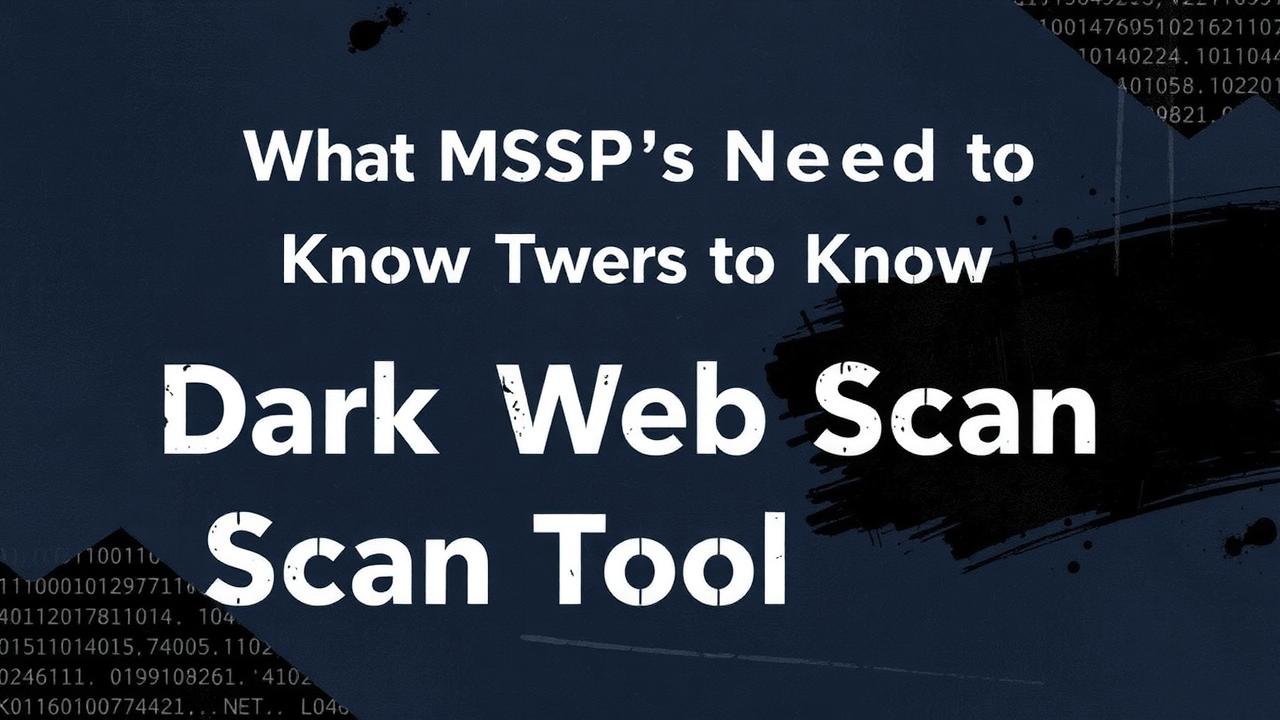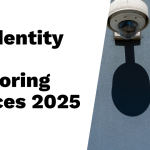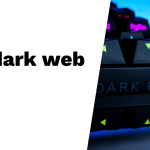Managed Service Providers (MSPs) need to understand that dark web scan tools are essential in detecting leaked credentials and breached data before cybercriminals exploit them. Platforms like darkwebreport.io and mspdarkintel.com offer real-time monitoring, automated white-labeled reports, and breach-based prospecting tailored for MSPs. These tools help MSPs identify vulnerable companies by industry and location, enabling targeted outreach with high engagement rates. Continuous automated alerts increase client trust while creating stable recurring revenue streams through subscriptions. Integration with popular MSP tools streamlines workflows, and human expertise remains important to interpret complex threats accurately. Avoid generic reporting or untargeted prospecting for meaningful results and growth potential.
Table of Contents
- Top Dark Web Scan Tools for MSPs: darkwebreport.io and mspdarkintel.com
- How darkwebreport.io Helps MSPs Convert Breach Data to Revenue
- Using Dark Web Scan Tools for Breach-Based Prospecting
- Offering One-Time Scan Reports to Unlock Client Engagement
- Benefits of Continuous Automated Dark Web Monitoring
- White-Labeling Features That Boost MSP Branding and Sales
- Common Mistakes MSPs Make with Dark Web Scan Tools
- Role of Human Expertise in Enhancing Dark Web Monitoring
- Integrating Dark Web Scan Tools into MSP Workflows and Revenue Models
- Protecting Clients with Real-Time Alerts and Actionable Insights
- Frequently Asked Questions
11.1. How do dark web scan tools help MSPs protect their clients from data breaches?
11.2. What types of data can MSPs expect dark web scan tools to find?
11.3. Are dark web scan tools effective in reducing security risks for MSP-managed networks?
11.4. How frequently should MSPs perform dark web scans to maintain optimal security?
11.5. What limitations should MSPs be aware of when using dark web scan tools?
Top Dark Web Scan Tools for MSPs: darkwebreport.io and mspdarkintel.com

Two leading dark web scan tools designed specifically for MSPs are darkwebreport.io and mspdarkintel.com, each offering tailored features to help MSPs protect clients and grow revenue. darkwebreport.io provides enterprise-grade intelligence with real-time scanning across forums, paste sites, leak databases, and encrypted Telegram channels. Its breach finder tool allows MSPs to filter compromised companies by industry and location, supporting targeted prospecting. The platform offers automated, branded one-time scan reports with clear remediation advice and continuous monitoring that delivers instant alerts. White-label customization lets MSPs control branding, pricing, and client communications, helping them achieve rapid monthly recurring revenue growth with markup margins between 200% and 400% and setup times under an hour. Additional features like CRM/email exports, threat intelligence dashboards, and a large breach database create a comprehensive solution for MSPs aiming to scale their services securely with SOC 2 compliance and 256-bit encryption.
mspdarkintel.com is built by MSPs for MSPs, monitoring over 500 billion breached assets with fresh data ingested multiple times weekly. It supports domain breach scanning, credential intelligence, and continuous live monitoring with immediate alerts. MSPs benefit from unlimited prospecting scans and reports, enabling efficient client acquisition. The platform integrates smoothly with popular PSA tools such as ConnectWise Manage, Autotask PSA, Microsoft 365, Slack, and Teams, automating ticket creation and alerts. White-label options let MSPs fully customize branding and pricing, while month-to-month billing requires no long-term contracts. MSPs report average monthly revenues around $8,500, with some reaching $12,000 to $18,000 or more. The tool monitors over 200 types of personally identifiable information and compromised credentials, backed by real human support rather than chatbots. With a strong emphasis on MSP revenue potential and client retention, mspdarkintel.com helps MSPs transform dark web monitoring into a scalable, high-margin recurring service.
| Feature | darkwebreport.io | mspdarkintel.com |
|---|---|---|
| Platform Focus | Designed exclusively for MSPs with enterprise-grade intelligence | Built by MSPs specifically for MSPs |
| Data Sources | Dark web forums, paste sites, leak sites, and encrypted Telegram channels | Real-time coverage of 500+ billion breached assets, fresh data 5 days a week |
| Breach Finder & Prospecting | Filters compromised companies by industry and location; up to 65% client engagement | Unlimited prospecting scans; identifies new clients efficiently |
| Reporting | Automated white-labeled one-time scan and monitoring reports with remediation advice | Detailed breach reports shareable with clients; white-label branding |
| Revenue Potential | 200%-400% markup margins; MSPs report rapid MRR growth ($4,500 to $8,000+) | Average MSP revenue ~$8,500 MRR; some achieve $12,000 to $18,000+ MRR |
| Setup & Support | Under 60 minutes setup; 24/7 partner support | Quick implementation with onboarding and training support |
| Integration | CRM/email export, threat intelligence dashboards | Integrates with PSA tools, Microsoft 365, Slack, Teams; automated ticket creation |
| Continuous Monitoring | Real-time alerts with instant breach notifications | Continuous live monitoring with immediate alerts |
| Security & Compliance | SOC 2 compliance; 256-bit encryption | Not specifically stated |
| Client Retention | Supports recurring subscriptions, prioritizes remediation advice | Reported client retention rates up to 94%, 40% higher retention with monitoring |
| Unique Features | Credential intelligence hub; breach-based prospecting tools | Revenue calculator tool; monitors 200+ PII types; real human support |
How darkwebreport.io Helps MSPs Convert Breach Data to Revenue

Darkwebreport.io equips MSPs with real-time breach finder tools that target companies with exposed credentials, allowing focused sales efforts that increase conversion rates. The platform automates the generation of white-labeled scan reports, providing clear breach details and prioritized remediation advice, which enhances client trust and positions MSPs as security experts. By offering one-time scans alongside continuous monitoring subscriptions, MSPs can transform occasional clients into steady, recurring revenue streams with attractive markups between 200% and 400%, significantly boosting profitability. Setup is quick, taking less than an hour, and 24/7 partner support ensures MSPs can go to market swiftly. Combining breach prospecting, on-demand scanning, and ongoing monitoring into a single workflow streamlines MSP operations and reduces manual workload, improving onboarding speed. The platform’s threat intelligence dashboards and actionable insights help MSPs deliver value beyond basic reports, differentiating their services in a competitive market. This scalable approach supports MSP growth by turning breach intelligence into reliable, high-margin revenue while strengthening long-term client relationships through continuous protection and expert guidance.
Using Dark Web Scan Tools for Breach-Based Prospecting

Dark web scan tools give MSPs a clear advantage by identifying businesses with leaked credentials, allowing sales teams to target high-risk prospects more efficiently. By filtering these prospect lists by industry, geography, and breach severity, MSPs can focus outreach efforts where they are most likely to succeed. Presenting concrete evidence of breaches during sales conversations adds urgency and credibility, increasing conversion rates significantly. Tools that offer automated, white-labeled email templates and detailed reports help MSPs maintain a professional appearance and boost engagement with potential clients. Tracking the ROI of these prospecting campaigns enables MSPs to refine their targeting and messaging strategies over time. Unlimited prospecting scans mean MSPs can continuously discover new prospects without worrying about additional costs, keeping their sales pipeline fresh. Combining breach data with existing client profiles allows for personalized, relevant discussions, positioning MSPs as proactive security partners rather than just vendors. Real-time breach updates ensure MSPs reach out promptly, beating competitors to the conversation. Avoiding generic outreach by tailoring communication based on specific breach details improves response rates and builds trust right from the start.
Offering One-Time Scan Reports to Unlock Client Engagement
One-time dark web scan reports give MSPs a powerful way to quickly show clients where their vulnerabilities lie and what risks they face. These reports typically include a clear risk summary, sources of breaches, lists of compromised accounts, and straightforward remediation steps clients can take right away. By providing this immediate insight, MSPs help clients understand their exposure without the usual overwhelm, making cybersecurity feel manageable. When MSPs white-label these reports, adding their own branding and contact information, it boosts credibility and builds trust, positioning the MSP as a true security partner rather than just a vendor. Automation plays a big role here, generating detailed reports quickly and freeing MSPs from manual tasks, which speeds up client onboarding and lets MSPs focus on more strategic work. One-time scans also open doors for ongoing conversations, MSPs can use the scan results to recommend continuous monitoring and breach alert subscriptions, turning a one-off service into steady recurring revenue. Prioritized remediation advice in the reports helps clients know exactly what to tackle first, reducing confusion and making follow-up easier. Plus, showing concrete evidence of breaches reinforces the MSP’s value, proving they’re not just selling a product but delivering critical protection. Customizable reports that include MSP branding, pricing, and service options allow for seamless upselling and clear communication. Sharing detailed breach analytics during meetings strengthens client relationships and can improve retention by demonstrating ongoing commitment to security. Overall, offering one-time scan reports is a practical, low-barrier entry point for MSPs to engage clients, build trust, and grow their cybersecurity service offerings.
Benefits of Continuous Automated Dark Web Monitoring
Continuous automated dark web monitoring lets MSPs detect new breaches affecting their clients in real time, so they can respond quickly and limit damage from stolen credentials. Instant alerts help MSPs act swiftly, which not only reduces risk but also shows clients a strong commitment to their security. Automation makes it possible to scale these monitoring services efficiently without adding manual work, freeing teams to focus on higher-value tasks. Dashboards play a crucial role by prioritizing alerts and visualizing risk trends across clients, improving overall service quality and decision-making. This ongoing protection keeps clients engaged and boosts retention, as they see real, proactive defense rather than reactive fixes. Integrating automated workflows with MSP tools streamlines incident response and ticket creation, making operations smoother and faster. Continuous data ingestion from many sources ensures broad coverage of emerging threats, giving clients timely, actionable intelligence instead of generic or outdated breach reports. Offering continuous monitoring also helps MSPs build a stable, predictable recurring revenue stream through subscription models, differentiating their services from one-time scans and adding significant long-term value for both MSP and client.
White-Labeling Features That Boost MSP Branding and Sales
White-labeling dark web scan tools gives MSPs a powerful way to reinforce their brand identity and professional image. By customizing dashboards, reports, and alerts with their own logo and colors, MSPs present a cohesive and trustworthy front to clients. This customization goes beyond appearance; it strengthens client relationships by making communications feel personalized and tailored rather than generic. For example, branded remediation reports help clients clearly see the MSP as the security expert guiding them, not just a reseller passing along data. Control over pricing and packaging also lets MSPs design service tiers that fit their market strategy and client needs, rather than being boxed into fixed offerings. This flexibility supports upsells and cross-sells because messaging stays consistent across all touchpoints, making additional services a natural extension of the existing relationship. White-labeling prevents exposing third-party platforms, so MSPs maintain direct client connections that foster trust and loyalty. In a crowded cybersecurity space, custom branding helps MSPs stand out, positioning them as proactive, knowledgeable security partners. Clients appreciate receiving clear, MSP-branded insights that simplify understanding breach risks and required actions, which leads to higher retention and more opportunities for recurring revenue. Integrating white-label features smoothly into MSP marketing and sales workflows streamlines operations and accelerates growth, turning dark web monitoring into a signature service that drives both credibility and sales.
Common Mistakes MSPs Make with Dark Web Scan Tools
One of the biggest mistakes MSPs make is delivering generic or non-actionable reports that fail to engage clients. Reports overloaded with technical jargon or unclear next steps can confuse clients rather than empower them. MSPs also often rely on manual monitoring processes, which delay alerts and increase risk exposure. This slows down response times and puts clients at greater risk of damage from breaches. Another common error is using untargeted mass outreach for prospecting. Sending generic messages to large lists results in low conversion rates and wasted effort, whereas targeted outreach based on breach severity and industry drives better engagement. Pricing services solely based on cost instead of value delivered leaves revenue potential untapped, missing out on higher margins that come from demonstrating clear ROI. MSPs sometimes ignore breach severity or fail to prioritize remediation steps, frustrating clients who need clear guidance on what to fix first. Overcomplicating reports with excessive technical details without tailoring them for non-technical stakeholders further reduces client trust and satisfaction. Neglecting ongoing team training on emerging breach trends leads to reactive service delivery instead of proactive protection. Failure to integrate dark web scan tools with existing MSP workflows and PSA platforms creates inefficiencies and missed automation opportunities. Many MSPs also underuse white-label features that could strengthen branding and client trust. Finally, not tracking ROI on prospecting and monitoring campaigns limits the ability to optimize sales and marketing strategies, leaving growth on the table. Avoiding these pitfalls helps MSPs provide clearer, faster, and more valuable dark web monitoring services that clients appreciate.
- Delivering generic or non-actionable reports that fail to engage clients effectively.
- Using untargeted mass outreach resulting in low prospect conversion and wasted effort.
- Relying on manual monitoring processes that delay alerts and increase risk exposure.
- Pricing services based on cost rather than the value delivered, leaving revenue potential untapped.
- Ignoring breach severity and failing to prioritize remediation steps frustrates clients.
- Overcomplicating reports with jargon and technical details that confuse non-technical clients.
- Neglecting ongoing MSP team training on breach trends, leading to reactive service delivery.
- Failing to integrate dark web scan tools with existing MSP workflows and PSA platforms.
- Underusing white-label features that could improve branding and client trust.
- Not tracking ROI on prospecting and monitoring campaigns, limiting sales optimization.
Role of Human Expertise in Enhancing Dark Web Monitoring
While automated dark web scan tools can process massive amounts of data quickly, human expertise remains crucial to effective monitoring. Skilled analysts validate automated findings to reduce false positives that could otherwise overwhelm MSPs and their clients. Experienced MSP teams bring context and insight, interpreting complex dark web activities that often require nuance beyond what automation can detect. This human layer helps prioritize alerts, ensuring MSPs focus on the most critical threats and avoid alert fatigue. Beyond threat validation, human experts clarify breach risks and offer tailored remediation advice, making communications more understandable and actionable for clients. Analysts also ensure that monitoring practices comply with privacy laws and ethical guidelines, a vital consideration often missed by automated systems alone. As cyber threats evolve, human teams adapt monitoring strategies dynamically, staying ahead of new dark web tactics. Offering real human support, not chatbots, improves MSP responsiveness and builds stronger client trust through personalized service. Skilled analysts assist in creating customized, clear reports that empower clients to respond effectively. By combining automation with expert oversight, MSPs strike a balance between efficiency and quality, delivering dark web monitoring that truly protects and supports their clients.
Integrating Dark Web Scan Tools into MSP Workflows and Revenue Models
Dark web scan tools fit smoothly into MSP workflows by integrating with popular PSA platforms like ConnectWise Manage and Autotask PSA. This integration automates ticket creation and sends instant alerts, making incident management more efficient and allowing MSPs to respond to client risks faster. Communication tools such as Microsoft Teams and Slack also connect with these platforms, enhancing team collaboration and ensuring everyone stays informed on breach updates. Data export features let MSPs funnel breach intelligence into CRM and sales systems, helping align security insights with business development efforts. Onboarding and training are designed to be quick and straightforward, reducing the time needed for MSP teams to adopt these tools effectively. From a revenue perspective, dark web monitoring fits well into subscription models that provide predictable monthly income. MSPs can offer these services as part of bundled cybersecurity packages, combining dark web monitoring with endpoint protection, vulnerability scans, or managed detection to create comprehensive client solutions. White-label options allow MSPs to customize billing and client portals, reinforcing their brand and improving client trust. The integration of these tools supports scalable service delivery by automating much of the monitoring and alerting, so MSPs can grow without proportional increases in manual work. Dashboards and ongoing reporting give clear visibility into how services perform and the risk levels clients face, enabling MSPs to demonstrate value regularly. For example, an MSP using darkwebreport.io can set up automated alerts that feed directly into their PSA and communication platforms, freeing their team to focus on remediation instead of manual scans. This seamless integration not only boosts operational efficiency but also helps MSPs build recurring revenue streams by offering continuous monitoring as a subscription service.
Protecting Clients with Real-Time Alerts and Actionable Insights
Real-time alerts are a vital feature that enable MSPs to respond immediately when client data surfaces in new breaches. Instead of waiting for periodic updates, MSPs receive instant notifications, allowing them to act quickly to contain the risk. These alerts are paired with actionable insights that help prioritize remediation steps based on breach severity and the type of compromised assets. For example, if a client’s admin credentials are exposed, the tool can flag this as high priority, prompting immediate password resets and multi-factor authentication (MFA) deployment. Alert dashboards streamline management by consolidating multiple clients’ incidents into one view, making it easier to track, prioritize, and address breaches efficiently. Providing clients with clear, prioritized guidance not only reduces their exposure but also builds trust, as they see MSPs delivering valuable, understandable recommendations rather than generic warnings. Continuous updates keep both MSPs and clients informed about emerging threats, ensuring defenses stay current. Contextual data such as the breach source and compromised information type helps MSPs make better decisions and allocate resources smartly. This combination of real-time monitoring and expert analysis strengthens the overall cybersecurity posture of clients while supporting MSPs in delivering timely, effective protection.
Frequently Asked Questions
1. How do dark web scan tools help MSPs protect their clients from data breaches?
Dark web scan tools help MSPs by continuously monitoring leaked data sources on the dark web. They identify if a client’s sensitive information, like login credentials or personal data, has been compromised. This early warning allows MSPs to act quickly to prevent further damage or unauthorized access.
2. What types of data can MSPs expect dark web scan tools to find?
MSPs can expect these tools to detect common types of exposed data such as usernames, passwords, credit card details, email addresses, Social Security numbers, and even proprietary business information. The tools scan various forums, marketplaces, and paste sites where stolen data is often traded or shared.
3. Are dark web scan tools effective in reducing security risks for MSP-managed networks?
While dark web scan tools are not a complete security solution, they are effective in identifying compromised data before attackers can exploit it. By integrating these tools into their security strategy, MSPs can reduce risk by addressing vulnerabilities early, informing clients, and enhancing incident response plans.
4. How frequently should MSPs perform dark web scans to maintain optimal security?
MSPs should run dark web scans regularly, ideally daily or weekly depending on client risk profiles. Frequent scans help detect new data breaches promptly since stolen information can appear on the dark web quickly after an attack. Consistent scanning improves the chances of timely response and mitigation.
5. What limitations should MSPs be aware of when using dark web scan tools?
MSPs need to understand that dark web scan tools may not detect every instance of compromised data, as some leaks happen in private or encrypted spaces that are hard to monitor. Additionally, false positives can occur, so it’s important to validate findings and pair these tools with other security measures for comprehensive protection.
TL;DR MSPs looking to protect clients and grow revenue should consider top dark web scan tools like darkwebreport.io and mspdarkintel.com. These platforms offer real-time breach monitoring, automated white-labeled reports, and strong prospecting features to help identify and engage companies with compromised credentials. Continuous monitoring services generate predictable recurring revenue while boosting client trust through actionable alerts and clear remediation advice. Avoid common mistakes like generic reports and untargeted outreach. Leveraging human expertise alongside automation improves threat validation and client communication. Integrating these tools into MSP workflows supports scalable growth and stronger branding, positioning MSPs as trusted cybersecurity advisors.





